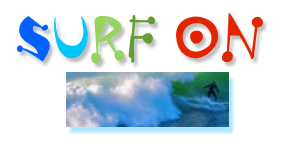
I have been giving this “Techniques of Fiction” workshop for a few years now at the Writer’s Center, Dancing Chiva, the San Miguel Workshops and San Miguel Writers Conference, and again at the Writer’s Center (near Washington DC).
There are two versions: the Supersonic Overview, a three hour workshop (or a little longer, as for Dancing Chiva) and the Ridiculously Supersonic Overview (as for the writers conferences), which conclude in under an hour.
You can get a PhD in creative writing (some people actually do, shake my head at that as I may), and though I believe learning to write is a never-ending, ever-deepening process, I also believe that because of the way the human brain is wired, the same few but very powerful techniques have provided, provide, and– barring bizarre genetic mutations– will continue to provide the most effective instructions to the reader to form, in John Gardner’s words, “a vivid dream” in her mind.
That’s what a novel is: instructions for a vivid dream. Sometimes I get all Californian and call it a “mandala of consciousness.” But whatever you call it, a novel is about providing the experience of someone else’s experience: Anna Karenina’s, Madame Bovary’s, Scarlet O’Hara’s, Harry Potter’s, [insert name of your main character here].
That’s what a novel is: instructions for a vivid dream. Sometimes I get all Californian and call it a “mandala of consciousness.” But whatever you call it, a novel is about providing the experience of someone else’s experience.
How do we, whether as readers, or as any human being (say, folding laundry, or maybe digging for worms with a stick) experience anything? Well, last I checked we are not free-floating blobs of consciousness (except maybe when we have out-of-body experiences and/ or when dead); we are in bodies. We experience what we experience through our bodily senses: sight, hearing, taste, smell, touch— and I would add a “gut” or intuitive sense as well. So any fiction that is going to be readable – a successfully vivid dream– needs to address the senses.
We experience what we experience through our bodily senses: sight, hearing, taste, smell, touch
The reader responds to specific sensory detail such as:
the color of the sweater;
the whisper of the wind in the ficus;
the droplet of honey on her tongue;
the mustiness of the refrigerator that had been left unplugged in the basement;
the cottony bulk of an armload of unfolded towels;
the sudden twinge of tightness in his throat just before he picked up the telephone.
There are an infinite number of techniques, but this– giving the reader specific sensory detail – is paramount.
Compare:
He was sad.
vs
He sank his chin in his hand. With his other, he fumbled across the table for a Kleenex.
Poor people lived here.
vs
The hallway smelled of boiled cabbage and a bathroom that needed scubbing.
Rich people lived here.
vs
Everything gleamed and behind her, a pair of white gloves pulled the door shut with a gentle click.
She disliked him.
vs
The sight of him made her grit her teeth.
She ate too much.
vs
From the tine of her fork, she licked up the last crumb of that crumbcake.
The neighbors were obnoxious.
vs
Though the Hip-Hop came from three houses down the block, she could feel it in her breakfast table when she put her hand on it.
#
Here’s my favorite quote about detail, from a letter by Anton Chekhov:
“In descriptions of nature one should seize upon minutiae, grouping them so that when, having read the passage, you close your eyes, a picture is formed. For example, you will evoke a moonlit night by writing that on the mill dam the glass fragments of a broken bottle flashed like a bright little star, and that the black shadow of a dog or a wolf rolled along like a ball. . .”
More anon.
P.S. For some fun exercises to generate specific detail for fiction, check out “Giant Golden Buddha” and 364 More 5 Minute Writing Exercises.
See also my recommended reading list on craft.
And: many more resources for writers here.

Ten Tips for Getting the Most Out of Your Writing Workshop
Consider the Typewriting (Am I Kidding? No, I Am Not Kidding)
Synge’s Aran Islands and Kapuscinski’s Travels with Herodotus
Find out more about C.M. Mayo’s books, shorter works, podcasts, and more at www.cmmayo.com.

